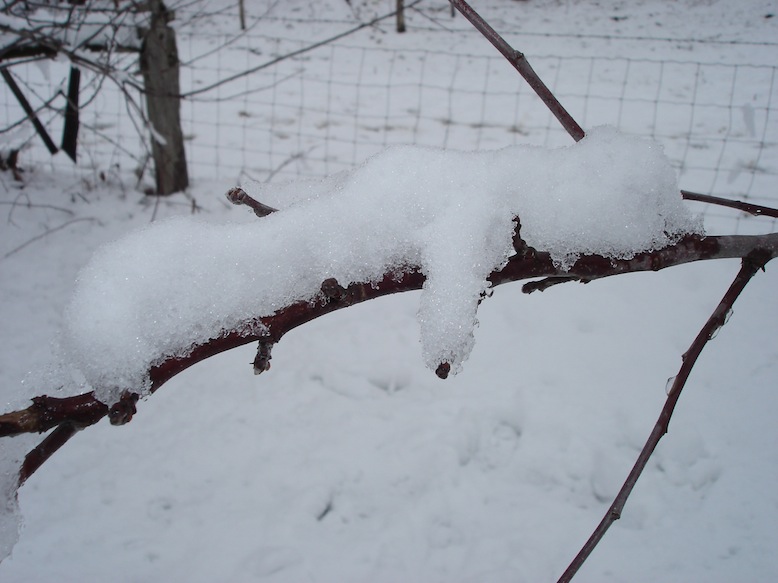
The accumulation of sticking ice during winter ice storms can make tree branches more than double in weight while at the same time adding stress to their weak points. That’s one problem. Then there’s the old “blessing and curse” situation: A bumper crop of fruit (that’s the blessing) and limbs that can’t quite carry the weight (that’s the curse). Both of these are nature’s first way of pruning by a breaking off of undesirable or weak limbs. Problem is, the good limbs with better potential are damaged or destroyed as well. Ice damaged trees generally appear unsymmetrical and may look out of place alongside other healthy non-damaged trees in a small orchard. Harmful insects or disease can also gain a foothold from ice damage, possibly causing the loss of the entire tree. Then you add in the extra time and expense of replanting. With a little forethought however, the orchardist can lessen potential damage caused by either too much fruit or ice, and in most instances, prevent what would become a weak branch from ever becoming vulnerable. This can result in a larger tree producing sooner than nature would otherwise allow. Isn’t that nice?
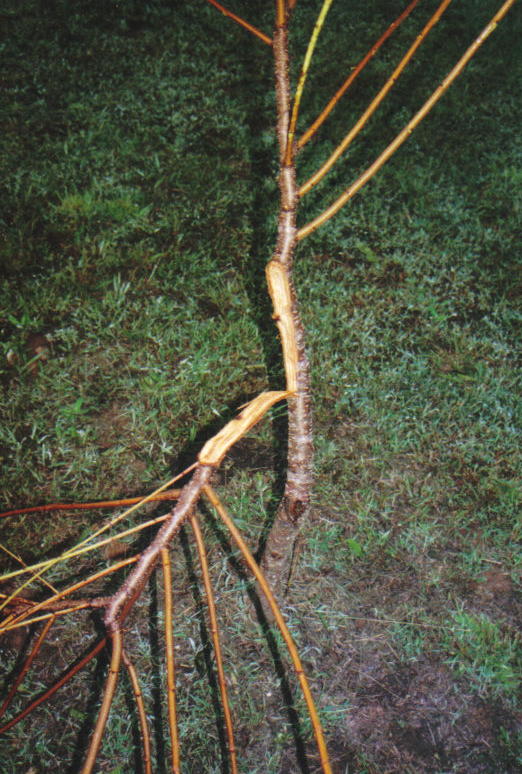
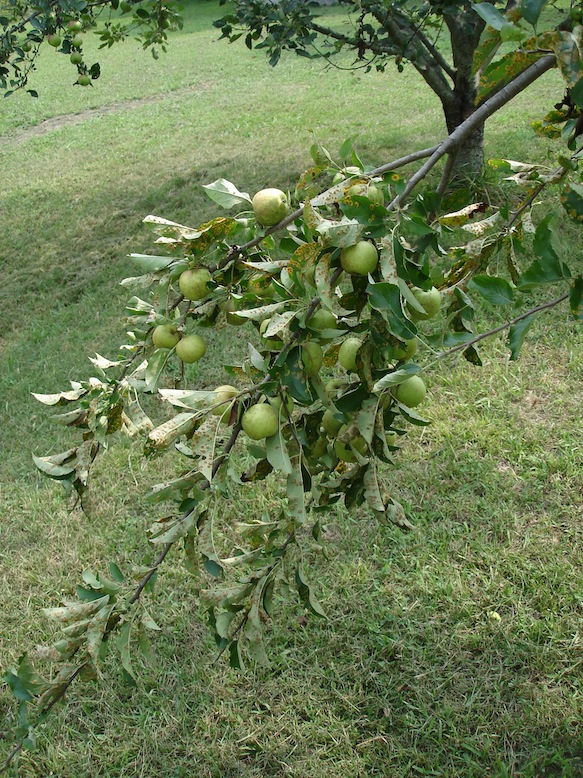
Why Train Branches?
The central goal in manipulating branch growth is to widen extremely acute angles made between the branch and trunk of the tree at the point where they meet. Now here’s an area where my high school geometry might be paying off. Acute angles are angles less than 90 degrees. The risk of damage to limbs with sharply acute angles increases as the tree grows in size. The extra weight of ice during a winter ice storm (or even a bumper crop of apples) can cause these branches to split off at the point where they join the main trunk of the tree. The angle formed by the main trunk and a connecting branch that is most at risk to ice damage would include angles in the 0 to 45 degree range…the lower the degree (or more acute the angle…i.e., more vertical the limb) the more vulnerable the branch is to ice accumulation or too many apples. The goal here is to change the natural inclination of a branch’s shape by training young branches to grow out of the trunk at near right angles. In addition to possessing a more stable angle that bears the extra weight of ice or snow well, branches growing like this allow sunlight in to the center of the tree improving fruit production.
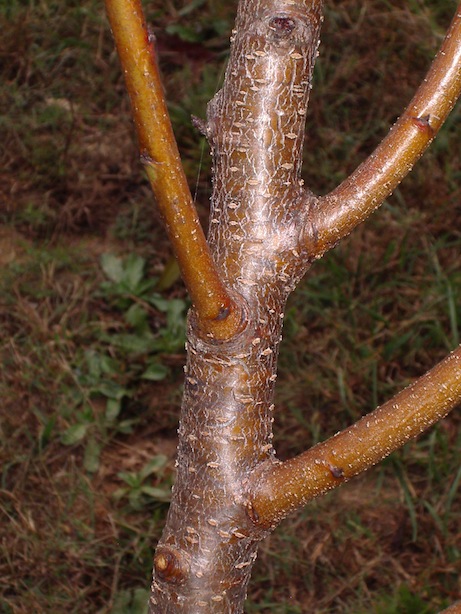
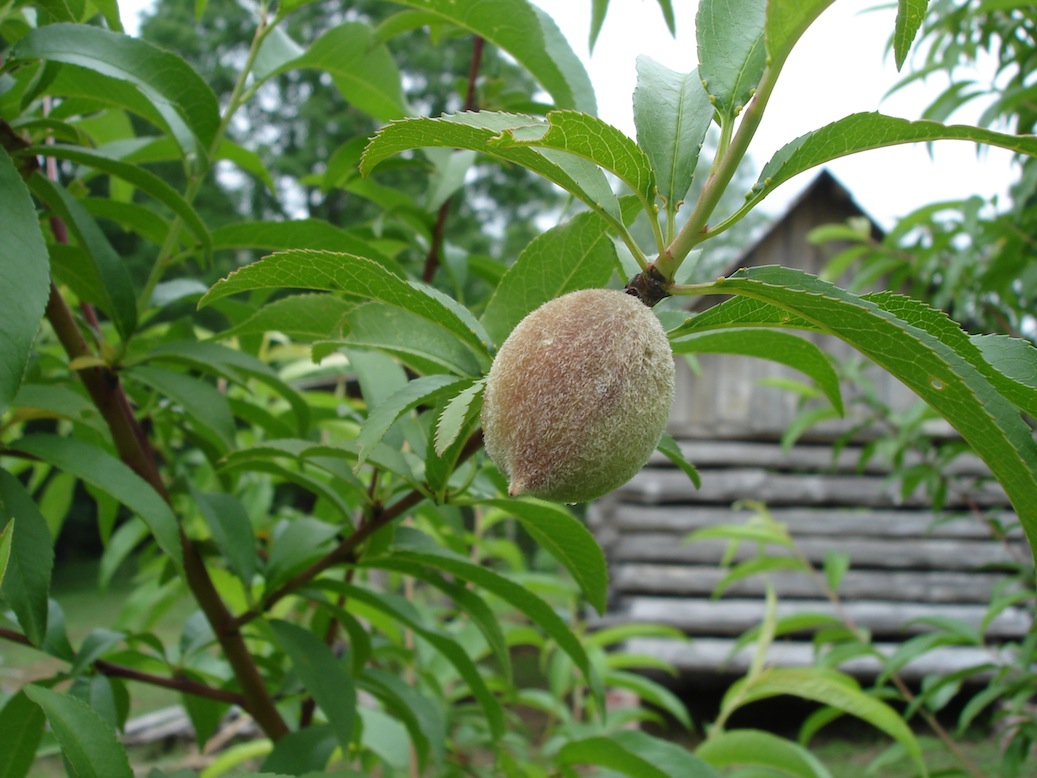
A good angle for a young branch…and not too crowded
One may “train” the branches to grow in a way that minimizes the risk that ice might cause. It is not important that the entire length of the branch bears this wider angle, just the first foot or so near the main trunk. The rest of the branch may curve up to whatever degree, since most branches naturally tend to grow skyward anyway. Even though each tree is different and should be treated uniquely, there are some basic principles that apply to all branch training. I’ll share ‘em with you.
Pruning is Primary Prevention
The best time to plan the strategy for a young tree’s growth is early spring…just before the sap begins to rise and buds begin to swell. It’s also the best time for pruning, which is the first step to good branch management. But I’ll go into that with another post some other time. The home orchardist can beat nature to the punch by cutting out the weaker, more undesirable limbs that heavy ice accumulation or heavy production is likely to destroy anyway. This can mean pruning anything from unnecessary limbs that already form too narrow an angle, to cutting off one of two twin leaders or trunks. You’ll do the job much neater than nature will, and with less risk to your tree.
Preparing for Training
The major step in preventing most types of damage to fruit trees would be to encourage branch growth that would form angles from 45 to 90 degrees off the main trunk as mentioned earlier. This is best done with the use of wooden branch stretchers. Don’t think it happens overnight…the process continues through the entire growing season, and sometimes more than one season. What you’re doing is taking advantage of the branch’s rapid cell growth in the spring, and continued growth all summer.
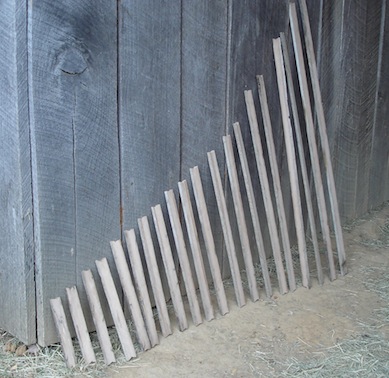

Cut out several sticks—from scrap lumber, saplings, or tree limbs—that are 1 to 2 inches wide, and 1/4 inch to 3/8 inch thick, and in various lengths from about 6 inches long up to 3 feet. Also have wide “V” notches cut or whittled on each end of every stick to help hold it in place. You’ll find it quite convenient to keep all your spreader sticks in a tall bucket. This allows you to spot right quick which size you’re huntin’ for. It may also be helpful later in the season when making adjustments (I’ll get to this directly in the next paragraph) to have each stick labeled according to its length with a permanent marker.
Training Sessions for Young Trees
Take a branch in need of attention and with very slow and gradual pressure, push down on the limb, stretching and widening its angle gently. Be very careful not to crack or break the limb. Then wedge an appropriately sized wooden stretcher between it and another higher object (the trunk or a higher limb), so that it maintains the new shape that you’ve bent it to. It’s best for the stretcher to be positioned anywhere from the middle of the branch toward the trunk if possible. You may not succeed in bending the branch to its desired angle right away…just keep an eye on the spreaders and re-adjust them periodically.
As each branch begins to conform to its latest position, make adjustments as necessary by repositioning the spreader for more tension, or replacing it with a slightly longer one. As the branch continues growing it will be “trained” to take a new position on its own, forming a much wider angle where it meets the trunk. At summer’s end, take all wooden spreaders off the trees and store them until next spring since no growth will happen during winter. Most critical training will be accomplished between about the second and fifth years of a tree’s life.

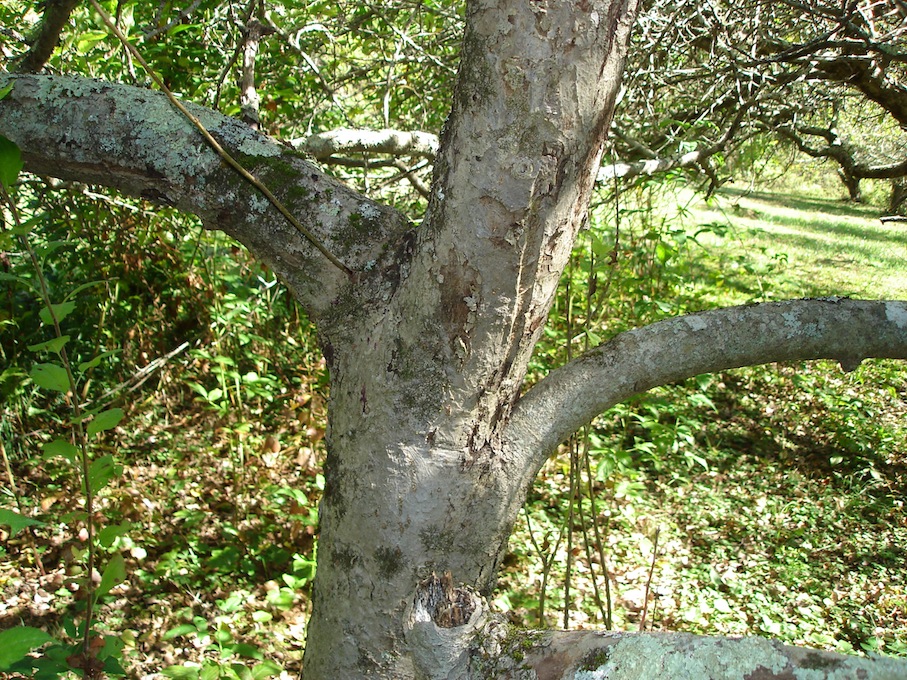
Training branches to grow in a more perpendicular direction away from the tree’s trunk won’t guarantee that they’ll never suffer damage due to extra ice or fruit, but it sure enough diminishes the possibility. Think for just a second about what we’re doin’ here. We’re changin’ the shape of a tree! Kind of a staggerin’ thought, isn’t it? Doesn’t happen overnight, either. Now that’s farmin’.
(This article was written by Pa Mac and first published as “Branch Training Young Fruit Trees” in the March 2006 issue of Tennessee Gardener Magazine, excerpted here with permission courtesy of State by State Gardening)
Shared on:
The HomeAcre Hop

